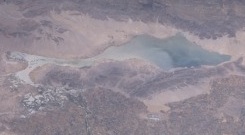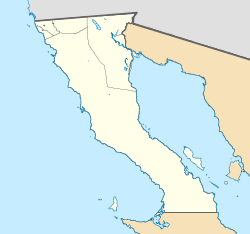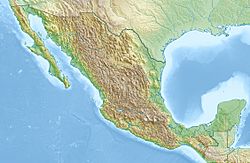Laguna Salada (Mexico) facts for kids
Quick facts for kids Laguna Salada |
|
|---|---|
 |
|
| Location | Sonoran Desert Mexicali Municipality, Baja California |
| Coordinates | 32°22′N 115°39′W / 32.36°N 115.65°W |
| Lake type | Endorheic basin |
| Etymology | Salty lagoon in Spanish |
| Primary inflows | rain dependent |
| Primary outflows | Terminal (evaporation) |
| Basin countries | Mexico |
| Max. length | 60 km (37 mi) |
| Max. width | 17 km (11 mi) |
| Shore length1 | 250 km (160 mi) |
| 1 Shore length is not a well-defined measure. | |
Laguna Salada (Spanish, "salty lagoon") is a vast dry lake some 10 meters below sea level in the Sonoran Desert of Baja California, 30 km (19 mi) southwest of Mexicali. The lake's shape vaguely resembles a rhombus. When dry, the flatness of the exposed lake bed sediments makes it a favoured location for recreational driving. It is also notorious for its dust storms when dry, usually the result of monsoonal thunderstorms during the summer. During times of significant rain the lagoon can fill completely with water, leaving the unpaved road along its west bank as the only means of traversing the area. Flanked by the Sierra de Los Cucapah and the Sierra de Juárez mountain ranges, the lake is approximately 60 km (37 mi) long and 17 km (11 mi) at its widest point.
Tectonic activity
The lake itself is located on the bottom of a shallow depression, a graben, which is linked to the San Andreas Fault, and the East Pacific Rise as part of the Laguna Salada Fault. This fault is connected to the Salton Trough fault which holds a similar depression, the Salton Sink. This sink is bigger than Laguna Salada and contains the Salton Sea. The 2010 Baja California earthquake occurred here.
See also
 In Spanish: Laguna Salada (Baja California) para niños
In Spanish: Laguna Salada (Baja California) para niños
- Lake Cahuilla - prehistoric lake near Laguna Salada



